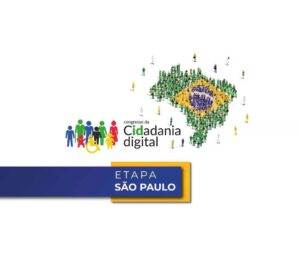Young People Up to 19 Years Old Lead the Issuance of the New National Identity Card (CIN) Across the Country. A total of 7.2 million young people, or 34% of the more than 21.5 million issuances, have already obtained the new National Identity Card (CIN). The main reasons behind the adoption of the new identity by children and teenagers are their familiarity with new technologies and the need to obtain their first photo ID, as many did not previously have the old RG. The data was released by the Ministry of Management and Innovation in Public Services (MGI) this Monday (March 10).
That’s the case for siblings Arthur and Beatriz Amâncio, aged two and six, respectively. They went with their father, Rafael, to apply for the CIN for two reasons: to open a bank account and to get a passport. “The account is to save their allowance in a risk-free investment, and the passport is because we’re planning a family trip abroad at the end of the year,” explains Rafael, a civil engineer.
Since he was already taking his children, Rafael took the opportunity to apply for his own CIN as well. He approved the new ID and highlighted its enhanced security features. “With so many technologies available, it was necessary for identity documents to incorporate the most modern security standards, whether in the physical or digital version.”
According to Rafael, children are already used to these technologies. In their daily lives, Arthur and Beatriz use facial recognition to enter school, their condominium, and even access their tablet. They are also familiar with QR codes, although they don’t fully understand their purpose on the identity card yet. “They only see QR codes in restaurants and usually associate them with menus,” says their father.
Meanwhile, Bernardo Melo, a 19-year-old university student, already had the old identity card, but it was worn out, and the outdated photo often made identification difficult in various situations. The student said he liked the new features of the CIN and that the changes did not feel overwhelming.
“Overall, I feel very comfortable with new technologies,” explains Bernardo, who already had the GOV.BR app installed on his phone. As soon as he received his printed CIN, he downloaded the digital version. “It makes things much easier. Sometimes you need your ID, but you don’t have your wallet with you. With this, you can solve everything just using your phone—no hassle,” he says enthusiastically.
By obtaining the CIN, Bernardo automatically gained gold-level status on GOV.BR, which grants access to all 4,500 federal public services available digitally on the platform. And he already has a favorite feature: “The GOV.BR digital document wallet helped me a lot. It’s very convenient,” he praises.
A New Perception of Identity Among Young People
The strong adoption of the CIN by young people reflects a significant change in how identity documents are perceived by newer generations.
“This is one of the many positive outcomes of our National Identity Card (CIN). It instills confidence and pride in the document that ensures their citizenship. Young people recognize the technology, modernity, and security embedded in their identity card and actively seek to obtain it,” celebrates Célio Ribeiro, Executive President of InterID.
Beyond its digital document wallet, which allows users to store multiple official documents in a single app on their mobile devices, the CIN can also incorporate additional personal information, such as driver’s license, work card, and voter registration card, as well as details like blood type, Rh factor, organ donor status, and health conditions, including hearing, visual, physical, or intellectual disabilities.
This unification of data and records will allow the CIN to become the only identification document Brazilians will need to carry in the future, enabling the government to offer better and more personalized public services.
Key Features of the New Identity Card
Among the main advantages of the CIN is its national standardization and unique identification number for all of Brazil. This eliminates the possibility of a person obtaining multiple RG numbers—one in each of the 27 states. From now on, each citizen will have only their CPF as the sole identification number recognized nationwide.
The CIN also enhances security through facial and fingerprint biometrics and QR code verification, seamlessly integrated with GOV.BR. These features significantly reduce fraud and identity errors.
Public Digital Infrastructure (IPD)
To further increase security, simplify citizens’ lives, and improve public service delivery, the MGI is implementing a Public Digital Infrastructure (IPD) for Civil Identification. This IPD will rely on the CIN database and the digital identification system of GOV.BR.
“This initiative will enable us to provide services in an automated manner, as we will have full certainty of the individual’s identity and their eligibility for specific services or benefits,” explains Rogério Mascarenhas, Secretary of Digital Government at MGI.
States with the Highest Percentage of CINs Issued to Youth up to 19 Years Old
| Pernambuco | 48,09% |
| Rio de Janeiro | 46,35% |
| Acre | 42,46% |




